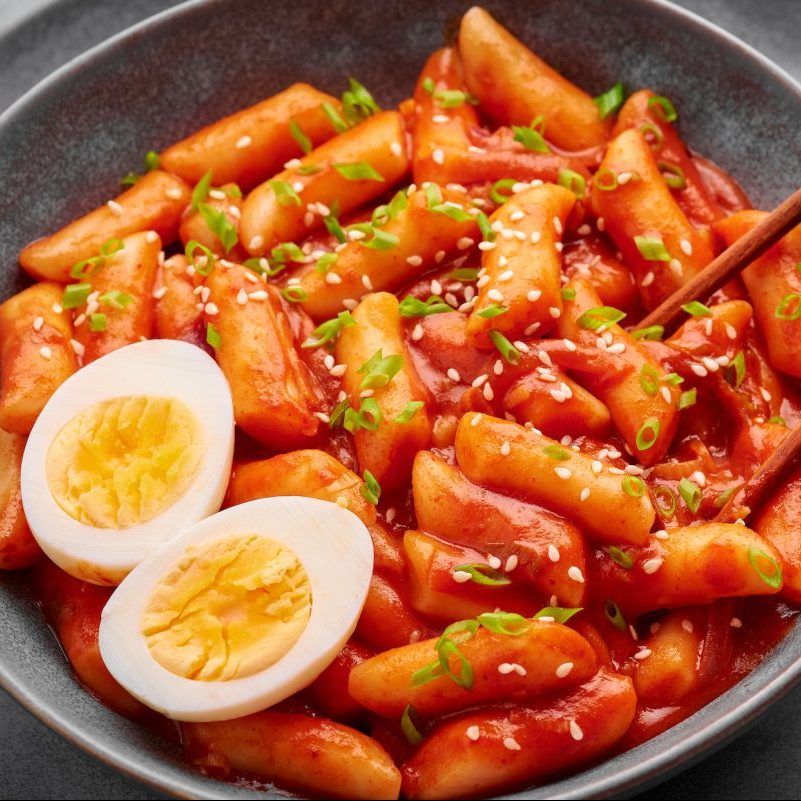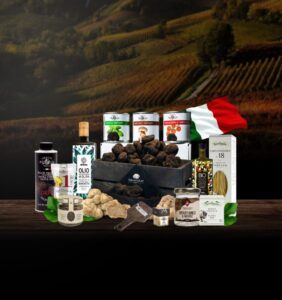
Kimchi mandu and jjajangmyeon may enjoy the most screentime when it comes to Korean dramas, but the true king of the streets is the chewy, spicy tteokbokki.
Served alongside chilled local beer, this treat features the perfect marriage of sweet and spicy. We’re sinking our teeth into its history, nutritional value, and more.
Comfort staple to millions in South Korea —including BTS’ Suga and Twice’s Jeongyeon — tteokbokki is served steaming hot across street food stalls in the country. Vendors, also called ponangmacha, often add their own little spin to the delicacy. However, at its heart, the culinary creation stays true to its translation — stir fried rice cakes. The typical grocery haul for it consists of chewy rice cakes, gochujang, soy sauce, sugar, and garlic. Together, these ingredients produce bold notes of sweet, savoury, and spicy and can be dressed up with eggs or meat.
What is tteokbokki and how did the dish originate?

Although often seen on the streets, tteokbokki — also spelled ddukbokki, dukbokki, and topokki — traces its lineage back to royal kitchens in the Joseon Dynasty. Back then, it wasn’t quite as red — taking on a brown, plain appearance instead. This version was made by stir-frying cylindrical rice cakes (garaetteok) with vegetables, beef, seafood, mushrooms in soy sauce, and spices. Eggs often made an appearance and the creation itself is referenced as byeongja. Other sources state names like gungjung tteokbokki (palace stir-fried rice cakes) and tteok jim.
A report by Korea Herald notes that gungjung tteokbokki was inspired by japchae noodles (glass noodles) and was created to help the king regain his appetite. Naturally, it had quite an exclusive reputation in the Korean culinary culture. Later, in the mid-1900s, gochujang was introduced to the country — right during the Korean War.
Then the dish transformed, with wheat flour cakes, fish cakes, and vegetables being boiled in the red pepper sauce mixture. Soon enough, as demand for the treat grew and pepper sauce and wheat were readily available, it had become popular with people from all walks of life.
The curbside snack is versatile and holds a nostalgic quality for locals
For most people who grew up in the land of the morning calm, tteokbokki was the treat they’d buy at a bunsikjeom (snack bar) post-school and university. For many others, it’s something they’d whip up with their families and friends when pressed for time. This has seasoned the delicacy with a certain nostalgia that’s transformed it into one of the most popular go-to comfort foods in the country.
The spice — strong and bold — combined with sweet and salty notes makes it nearly addictive. Many old-school, vintage restaurants continue to hold space in the hearts of locals for their timeless flavours.
More new establishments, on the other hand, take the quintessential flavour and make variants of it. Tteokbooki is as versatile as they come, being transformed using a range of different sauces and toppings. We’re talking cheese, squid, cream, instant noodles, bean sprouts, and milk.
There are also vegan and vegetarian variants. This, in part, might be the product of several tteokbokki franchises opening up in the 2000s, each of which had its own little experiment with the main recipe. There are instant versions and meal kits available across stores as well. A report by The Hankyoreh noted that the Korea Customs Service placed exports of tteokbkki at a whopping USD 54 million.
Tteokbokki must be had in moderation
Tteokbokki packs in the carbs and fat, depending on the variation you’ve chosen to go with. 250 grams serving of the original version comes with about 330 calories, 10 g of fat, 10 g of protein, and 50 g of carbohydrates. There’s also 4 g sugar and 2.5 g dietary fibre. With this, you also get in small doses of vitamins A, C, and D as well as iron, calcium, and potassium. Considering the carbohydrate content of each serving, tteokbokki is best had in moderation.
That said, it does have enough nutrients to ensure it can be a part of a well-rounded diet. You could switch out the rice for buckwheat and sweet potato cakes as well, depending on where you’re buying it from.
This story first appeared on Lifestyle Asia Singapore
(Main and featured image: Andrei Kravtsov/Getty Images)
an update!
You’re all set
Thank you for your subscription.
Subscribe to our newsletter to get the latest updates.
You’re all set
Thank you for your subscription.


